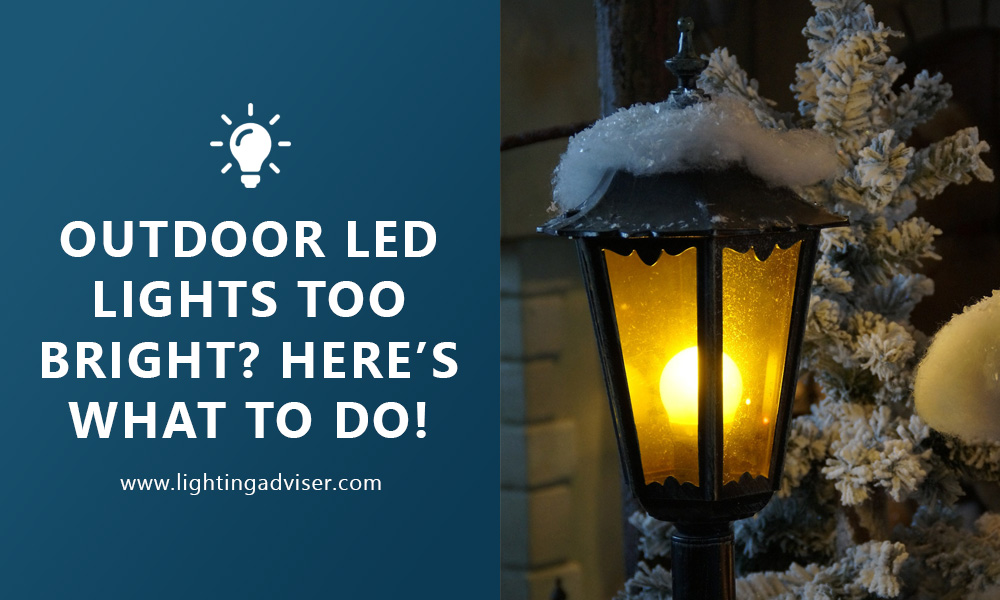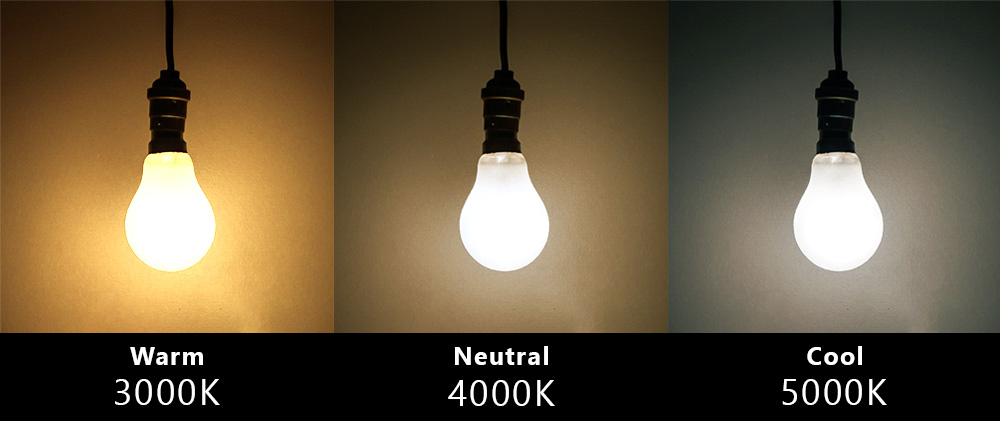We’re an affiliate: Some of the links on this page are affiliate links. We may earn a small commission on purchases made through them.
There are many benefits to having outdoor lights. They can be practical, deter burgulars, and if done right, they are visually stunning.
However, a common problem is that the lights are too bright. In this guide, we’ll take a look at some ways to deal with the high brightness.
Three solutions for outdoor LED lights that are too bright:
- Replace the bulbs – As long as the bulbs aren’t integrated this is an easy solution that allows you to choose bulbs that aren’t as bright but also have a warmer color temperature.
- Install a dimmer – This solution is perfect if you want control over the brightness.
- Use softening sheets – This is more of a hack for when you have integrated non-dimmable bulbs. The first two options are preferable where possible.
In the rest of this guide, we’ll take a closer look at these three options and their adantages and disadvantages.
Contents

Too Bright or Too Cool?
Before you make any changes, take a monent to decide whether the problem is that the lights are too bright or the wrong color temperature (or perhaps both).
LED bulbs have a color temperature rated in kelvin that is usually between 3000-5000K. The higher the temperature, the whiter and more harsh the light is.
The chart below illustrates different color temperatures.

If the bulbs currently in your light fixture are cool (have a high temperature), then they will be quite harsh and may appear too bright.
If this is the case, only our first solution – replacing the bulbs – will be of any use. Using a dimmer or dimming sheets on LED bulbs won’t change the color temperature, only how bright they are.
Solution 1: Replace the Bulbs
Your first option is to replace the bulbs. If you’ve decided your current bulbs are too cool, this is the ideal solution.
Obviously, if you’re light fixture has integrated bulbs then replacing them isn’t possible and you’ll need to move on to the next options.
There are a few things to consider if you choose to replace the bulbs.
- Fewer lumens – The brightness of a light bulb is measured in lumens. A common misconception is that watts are what determine brightness. Whilst watts and lumens usually correlate, make sure to focus on the number of lumens.
- Lower color temperature – As we’ve already discussed, a lower color temperature will be less harsh on your eyes so worth considering if you find this to be a problem.
- Dimmable bulbs – Not all LED bulbs are dimmable. It’s a good idea to choose dimmable bulbs so you can install a dimmer if you still find them to be too bright.
Choose the right bulbs for your fixture:
Light bulbs have different base fittings so you need to make sure the bulbs you buy have the correct fitting for your light fixture. You also need to make sure the bulbs don’t exceed the maximum wattage of your fixture. (It’s fine for the ‘equivalent’ wattage to be over the limit as long as the ‘actual’ wattage is not.)
Solution 2: Install a Dimmer
The second solution is to install a dimmer. Keep in mind a dimmer won’t affect the color temperature of LED bulbs, only the brightness. So if you’ve decided the color is too harsh, you’re going to want to replace the bulbs.
The Treatlife Smart Dimmer Plug (link to Amazon) is super easy to install and suitable for use outdoors and allows you to set the brightness via a smartphone app.
Installing a dimmer is great if there are times when you actually want the lights to be bright. If you simply put in weaker bulbs, you’re limited to their maximum brightness. By using a dimmer you have a lot more control and options.
As previously mentioned, not all LED bulbs are dimmable. Make sure your current bulbs are dimmable or if you decide to replace them, make sure the ones you purchase are dimmable.
Solution 3: Use Softening Sheets
The last option is to use softening sheets. These are like a thin film with adhesive that you use to cover and dampen the light. If the bulbs are integrated and not dimmable, this will probably be your best option.
You cut the sheet to size and stick it over the light. If you find one sheet doesn’t cut it, you can add an additional layer. The most popular dimming sheets are the LightDims softening sheets (link to Amazon).
It is a very simple and effective solution but it does have a few downsides:
- Can’t be used on surfaces that get above 205°F – If dimming sheets are placed on a surface that gets hotter than 205°F they are a fire risk. As long as your lights are LED, they should stay below this temperature, however, if they are an unusually high wattage you will need to be cautious.
- Hard to get it looking neat – You have to cut the sheets to fit your light and it can be tricky to get a clean cut that looks neat and tidy on your lights. If anyone in the house is particularly crafty, it might be worth getting them to give you a hand!
- Only works effectively on flat surfaces – Due to the nature of these sheets it’s difficult to get them to conform to curved surfaces. They’re only really suitable for flat surfaces.
Another thing worth noting is that they’re also fairly expensive for what they are. You won’t have to spend much more to replace the bulbs or install a dimmer which are both better solutions overall.
Final Thoughts
To wrap it up, the first thing you want to decide is whether it is the brightness or color temperature that you don’t like.
If you don’t like the color temperature then you’re going to want to replace the bulbs with some that are warmer (around 3000K).
Installing a dimmer is a great option if you’re using dimmable bulbs. A dimmer gives you control over the brightness so you still have the option to have them on a brighter setting.
For integrated non-dimmable bulbs you can apply softening sheets. However, these are fairly expensive for what they are, hard to get looking tidy, and only work effectively on flat surfaces.


